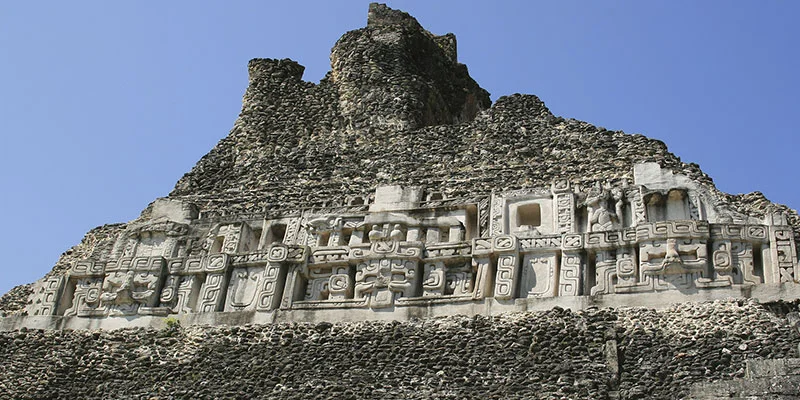Hundreds of ruins and ceremonial centers evidence that Belize was populated by the Maya Civilization for thousands of years. This civilization reached its peak during the Classic Period between A.D. 250 and 900. At its height, the Maya of Belize and Central America formed one of the most densely populated and culturally dynamic societies in the world.
In 1502, Columbus sailed through parts of the Caribbean, but did not actually visit the area later known as British Honduras. The first European to make Belize his home was Gonzalo Guerrero, a Spanish sailor from Palos, who shipwrecked along the Yucatan Peninsula in 1511. He was captured by the Maya and later married and settled at Chactemal, now modern day Corozal Town in northern Belize.
The Balam Coastal Estates were part of a major trading route in relation to Bacalar Chico on Ambergris Caye. The Mayans cut through the reef and then used the lagoons and waterways to head inland - a likely destination being the ruins of Cerros (across from Corozal Town); the first Maya coastal trading center. Cerros is considered one of the most important late preclassic Maya sites because it represented the first experiment with kingship in the Maya world. The remains include a number of temples, plazas, ballcourts, canals, and minor structures. A lot of the dwellings on the Balam Coastal Estates appear to be trading/commute outposts and many remnants remain unearthed throughout the property.
From the late eighth through the end of the ninth century, something unknown happened to shake the Maya civilization to its foundations. One by one, the Classic cities in the southern lowlands were abandoned, and by A.D. 900, Maya civilization in that region had collapsed. The reason for this mysterious decline is unknown, though scholars have developed several competing theories.
Some believe that by the ninth century the Maya had exhausted the environment around them to the point that it could no longer sustain a very large population. Other Maya scholars argue that constant warfare among competing city-states led the complicated military, family (by marriage) and trade alliances between them to break down, along with the traditional system of dynastic power. As the stature of the holy lords diminished, their complex traditions of rituals and ceremonies dissolved into chaos. Finally, some catastrophic environmental change–like an extremely long, intense period of drought–may have wiped out the Classic Maya civilization. Drought would have hit cities like Tikal–where rainwater was necessary for drinking as well as for crop irrigation – especially hard.
All of these factors – overpopulation and overuse of the land, endemic warfare and drought – may have played a part in the downfall of the Maya in the southern lowlands. In the highlands of the Yucatan, a few Maya cities–such as Chichén Itzá, Uxmal and Mayapán–continued to flourish in the Post-Classic Period (A.D. 900-1500). By the time the Spanish invaders arrived, however, most Maya were living in agricultural villages, their great cities returned to the earth buried under a layer of lush rainforest.

